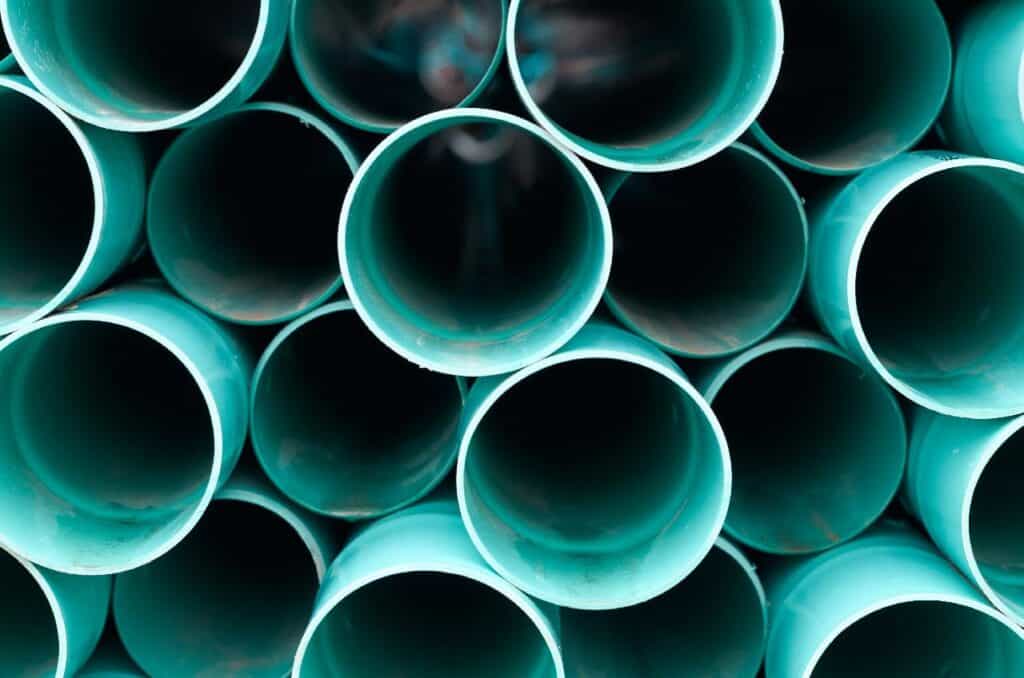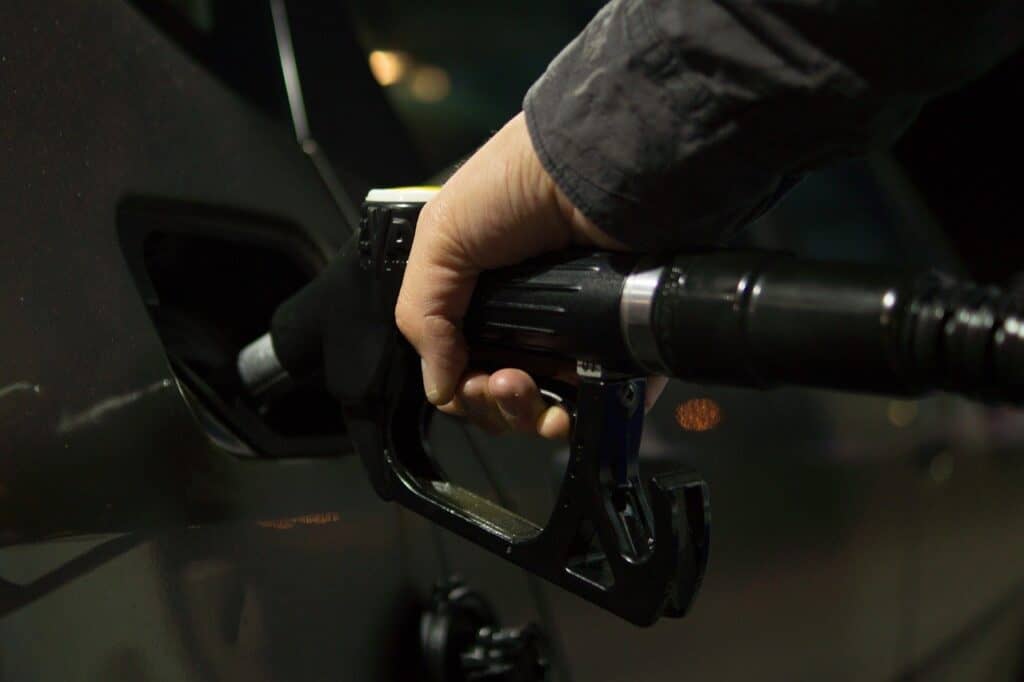The building trade used to love PVC pipe. It was cheap and easy to use, with a high level of versatility and durability. It was nearly as strong as a metal pipe. As a thermoplastic, PVC is super easy to form in nearly any shape that is required. But, in recent years, it has fallen out of favor and CPVC has taken its place – but why was this? Is it something to do with PVC pipe being flammable?
PVC (polyvinyl chloride) pipe is not considered flammable. PVC has an ignition temperature of 734 degrees Fahrenheit (390 degrees Celsius) to catch fire.
While PVC can catch fire (most things will when it gets hot enough), it will not very readily ignite. Here’s what you need to know.
Your # 1 priority is keeping your family safe. As a firefighter, I recommend everyone has updated smoke detectors that don’t require battery changes, like these ones from Kidde, a fire extinguisher, like this one from Amerex, and a fire escape ladder if you have bedrooms above the first floor, I recommend this one from Hausse.
Also read: What Makes Something Flammable?
What Is PVC Pipe?

PVC is polyvinyl chloride and it’s a popular plastic with many different uses.
It is a “thermoplastic”, which means it can be molded with the use of heat. This makes it quite easy to work with – you heat it up to make it softer, bend it into place, and then allow it to cool to harden.
The biggest advantage of PVC piping is that it’s super cheap.
It is close to as strong as metal pipe, but costs much less and requires far less maintenance in the long run, as PVC does not rust or corrode as some metals will.
In general terms, PVC is also considered quite safe when used in structures for human habitation and doesn’t give off any toxic emissions at normal temperatures.
It is being superseded by CPVC, which is a new form of plastic. Building codes are beginning to recognize that while PVC is great at ordinary temperatures – you don’t have to get it too hot before it starts to give off fumes.
These fumes may be dangerous to users.
In fact, PVC appears to emit fumes at around 140 degrees Fahrenheit, which isn’t that hot when you consider it’s used to carry hot water.
CPVC, on the other hand, can handle temperatures at up to 200 degrees Fahrenheit without any issues.
However, CPVC is more expensive than PVC and unless compelled to do otherwise, much of the building trade will still opt for PVC, if they can, to increase their profits.
Also read: Is Fiberglass Flammable or Fire Resistant?
Flammability Rating
The official flammability rating of PVC (polyvinyl chloride) is UL 94 V-0, which means that it is regarded as a self-extinguishing material.
That’s because unless you keep PVC pipe under intense heat and flame, it doesn’t burn very well at all.
PVC pipe needs a temperature of around 734 degrees Fahrenheit (390 Celsius) to catch fire which is quite high.
Other building materials, for example, wood, have much lower burning temperatures. Wood burns at around 500 degrees Fahrenheit.
However, PVC pipe can still catch fire under relatively ordinary circumstances and it’s not as safe as it could be.
Take a look at this video showing that PVC will catch fire with enough heat:
Also read: Is Bamboo Flammable? Examined
Is It Considered Combustible?
Yes, all plastics are considered to be combustible. Though PVC (polyvinyl chloride) is naturally fire-resistant.
It contains a large number of chlorine ions in the molecular structure and these are particularly difficult to break off when exposed to heat.
If it does catch fire, PVC has a particularly slow spread of flame.
However, it does spew out a lot of smoke and that smoke may contain toxins.
There is some debate over just how toxic PVC fumes can be and while we don’t feel qualified to comment on that – we would note that there is little debate that PVC fumes are bad for children’s health.
And we would not recommend breathing in the fumes if you can help it, even as an adult.
Also read: Is Silicone Flammable or Fire Resistant?
At What Temperature Does It Soften?
PVC will start to soften around 200 degrees Fahrenheit (93 Celsius).
One of the reasons that PVC piping may give off fumes at a relatively low temperature is that as a thermoplastic, it softens when it becomes warm.
At around 200 degrees Fahrenheit, PVC begins to appreciably soften and by the time your reach 350 degrees, it becomes viscous (that is it starts to take on the attributes of a thick liquid such as treacle).
Thus, the hotter PVC becomes, the easier it is to shape it to your requirements, but also the easier it is for it to release some fumes (think of it as evaporation, as some alcohol evaporates from a warm glass of vodka).
If you are heating PVC to bend it, you should be aware that you need to maintain the temperature during the bending process. If it cools then you will find the pipe will either snap or shear and thus, you’ll need to replace it.
That can mean maintaining the temperature for up to an hour if you are bending 6” pipe and probably for longer on a larger diameter.
Also read: Is Rubber Highly Flammable?
What Does It Release When Burned?
PVC can release water (H2O), carbon monoxide (CO), carbon dioxide (CO2), and hydrogen chloride (HCl).
Plastic is long hydrocarbon chain. That is it’s made mainly of hydrogen and carbon.
When you burn hydrogen, you get dihydrogen monoxide, or as it is better known, water.
Then when you burn carbon, you get carbon monoxide and carbon dioxide.
Carbon dioxide is the gas that you breathe out all the time.
It’s not toxic on its own, though if your space fills with carbon dioxide and it drives out the usual air – you won’t be able to breathe. (It can displace the oxygen you need to breathe).
Carbon monoxide, on the other hand, can and does kill people.
It binds to the blood at the oxygen receptor and cannot be dislodged (called carboxyhemoglobin). It’s dangerous.
It’s also worth noting that another byproduct of burning PVC is hydrogen chloride, which when mixed with water (say, in your eyes or lungs) forms hydrochloric acid.
In short, don’t breathe in the smoke.
Related Articles
Is Polyurethane Flammable? It Depends…
Is Paint Thinner Flammable? Technically No…

